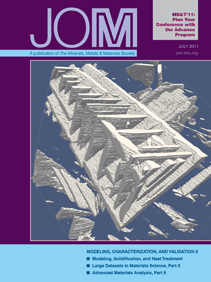 |
TMS
ONLINE | TMS
PUBLICATIONS | SITE
MAP JOM Material Matters Articles in Full-Text Format: December 2003 |
|
|
|
|
Exploring traditional, innovative, and revolutionary issues in the
minerals, metals, and materials fields.
|
|||||
| OUR LATEST ISSUE | |||||
|
VISIT THE JOM COVER GALLERY
|
United States Patent and Trademark Office Interviews—Kill or Cure?Arnold B. SilvermanAn interview with a United States Patent and Trademark Office (USPTO) patent examiner regarding a pending patent application can be an efficient and economical means for advancing prosecution of a patent application. It can also be a disastrous experience for an attorney or inventor who is unprepared, impulsive, or makes potentially damaging admissions or decisions that will ultimately be reflected on the public record once a patent issues. Interviews are frequently helpful where a dialogue appears to be a more efficient way of handling issues than exchanges of written communications. An examiner or an examiner and his or her supervisor may participate on behalf of the USPTO. The attorney representing the inventor(s) may conduct the interview alone or may have one or more inventors participate. For purely formal matters or minor issues that can be handled easily, a telephone interview is frequently the approach of choice. Also, in situations where a USPTO action is unclear or one wishes to make an inquiry as to whether a given response would be acceptable to the examiner, frequently, telephone interviews are efficient. Where the issues are more complex and involve applying legal standards of patentability such as, for example, whether the disclosure was an enabling disclosure (i.e., one that would permit one skilled in the art to practice the invention without having to engage in undue experimentation) or whether the claims would be obvious to one skilled in the art over prior art, mixed issues of law and technology are frequently involved. Such issues are frequently handled by the attorney representing the inventor(s). In some instances, it is preferable for the inventor(s) to participate in the interview. In such cases, it is important that the inventor be adequately prepared for the proceeding. An inventor who either does not understand the proceedings or who uses language loosely may do damage to his or her cause. Further, such damaging comments may be incorporated into the interview report that the examiner will prepare. Once a patent issues, the entire application file, called the “file history”, is available to the public. Damaging remarks during an interview can affect the strength and enforceability of a patent. Such comments can be particularly harmful as the inventor is in a position to make admissions against interest and is typically one skilled in the art. In preparation for the interview, frequently, physical exhibits are desirable, such as working models of the product, working models of the prior art, photographs, videotapes, charts showing graphic comparisons between the invention and the prior art, or tables of data. It is also common to bring to an interview proposed specification or claim amendments that the applicant is prepared to make. Such modifications are deemed by the applicant to overcome objections or rejections raised by the examiner. The interview provides an opportunity for an exchange of views in order to determine whether the examiner is in agreement and, if not, whether additional or alternate changes would result in allowance of the application. At the end of the interview, it is important that all parties in attendance have a clear understanding of what has transpired. For example, an examiner may agree that if claims newly presented during the interview are filed they will be allowed, or the examiner may indicate that no decision is being made at the interview or the examiner may adhere to prior rejections. Also, if additional action on the part of the applicant is desired or required, it is important that there be a meeting of the minds as to what that action is. After the interview, the examiner is required to prepare a written summary of the interview. Copies of this interview are forwarded to the inventor’s attorney and placed in the USPTO file. Patent and Trademark Office interviews are generally informal in nature. As with all communications with the USPTO, communications must be of a courteous, professional nature. The office examiners handling a particular application will generally have a technical background, either through education, experience, or both, relevant to the subject matter of the invention. The examiner will know the legal standards applied in handling a patent application, including the relevant statutory provisions, USPTO rules, and the Patent Manual of Examining Procedure, which provides refined guidelines regarding patent prosecution. While there is no requirement that an interview be conducted, the interview is frequently a valuable tool for promptly and economically obtaining allowance of an application or, at worst, a refinement and clarification of the issues involved. Arnold B. Silverman is chair of the Intellectual Property department and a member of Eckert Seamans Cherin & Mellott, LLC in Pittsburgh, Pennsylvania. For more information, contact A.B. Silverman at Eckert Seamans Cherin & Mellott, LLC, 600 Grant Street, 44th Floor, Pittsburgh, Pennsylvania 15219; (412) 566-2077; (412) 566-6099; e-mail abs@escm.com.
|
Copyright © 2003 by The Minerals, Metals & Materials Society.
Direct questions about this or any other JOM page to jom@tms.org.
Search TMS Document Center Material Matters Contents JOM TMS OnLine
